Why Are Email Greetings Important?
You cannot just go straight in with the body of your message without a greeting and an enticing opening line.
Why?
Because it just seems a bit rude, and very informal. Ask yourself, would I bother reading that entire message? Probably not!
Email greetings are important because this encourages the recipient to keep on reading. With good professional email greetings and strong first lines, you can entice your reader to read the whole thing and take action at the end.
So, if you don’t start your emails off properly, you're unlikely to get a response or receive the outcome you were expecting.
Keep reading to learn how to start off an email using formal email greetings.
Best Ways to Start an Email
Want to know how to properly start an email?
Although the subject line matters in terms of the opening the message, the greeting and first sentence should make them want to stay and read to the end.
The best way to start an email depends on a few factors.
- How well do you know the recipient?
Depending how well you know the recipient, determines the greeting of your message. Of course, it's best to always keep it formal and professional just in case the message is read by someone else. - Have you found the direct mail address?
Spend some time researching to find a direct mail address, instead of a general one. This is so the right person gets this message in their inbox, and it makes you seem professional since you’ve already done some research. - What is your aim for the email?
You need to think about the end goal for this message. Do you simply want a response, or for the reader to take action with something else? If so, you're going to need them to read till the end. - What context is going to be in the body of the message?
It's best to have an idea of the context of the message, so you know which appropriate professional email greetings to use, and how to structure your opening sentence. - Don’t forget grammar!
You then need to use the correct grammar, a comma after the greeting, and a capital letter for the first letter of the opening sentence. An online proofreading tool, such as Grammarin, can help check and correct grammar in emails, including greetings and body text, ensuring clarity and accuracy.
“Dear Mr. Brown,
I’m writing to inform you of…”
You can start crafting your professional business email with all the above. Here are more effective email communication tips to help.
Best Greetings to Start an Email
Here’s how to start an email with greetings. These greetings can be used for both formal and informal emails.
💡 Note: If you’re not sure whether to use a formal or informal greeting, always go formal.
- Dear [Name]
This is perfect for a formal email, or a message to someone who doesn’t know you personally. Using the word ‘Dear’ and the reader's name eliminates the risk of misgendering somebody when using Mr/Mrs. - Hello/Hi
Using ‘Hello’ or ‘Hi’ is a great way to start an email without it being too formal. It gives off a friendly tone and is perfect for the workplace. - Hi [Company Name]
Another informal, but still appropriate business email greeting. Greeting the entire team helps if you don’t know the exact name of the person you are contacting and can apply to anybody.
How to Start a Professional Email
To start a professional email, it's best to always keep your formality. Use a formal email greeting and an enticing opening line to ensure the recipient keeps on reading.
How to start an email professionally using a formal opening line:
- “I’m emailing you to…”
Professionals like a quick and concise message. They do not have time to talk about life. A quick-to-point opening line shortens the message and increases the chance of a quick response! - “I hope this email finds you well.”
Starting with a greeting like this gives a warm tone and a kind gesture in one. It also doesn’t require a response, meaning there won’t be any unneeded conversation. - “Good morning/afternoon/evening.”
An easy formal gesture for opening an email. Be sure to use the right time of day! - “I’m hoping to get your opinion/input…”
Also, very concise. This opening line gets straight to the point and asks for a specific outcome from the message.
Email Greetings and Opening Lines to Avoid
It's easy to accidentally use common email mistakes; however, to build a good rapport, and achieve the outcome of your initial message, you're going to want to avoid these emailing mistakes:
- Dear Sir/Madam
This greeting is very impersonal, and overused! You may also misgender your recipient which is very non-inclusive and may lead to them not responding. - To whom it may concern.
Another very overused email greeting. It’s quite boring and shows you didn’t try to research the correct name. - Misspelt names!
Misspelling names on an email is a huge mistake. It’s very careless and shows you have no eye for detail. - [Enter name here]
Oops! Forgetting to input someone's name into an emailing template is very awkward… Avoid this mistake by always checking your emails before sending them!
(Take a look at our welcome email templates and our professional email templates.) - “Let me introduce myself.”
This opening line is very self-centred. It doesn’t seem like you’re interested in the recipient at all. Overall, this wastes a lot of time. Here’s how to introduce yourself in an email. - “Can you do me a favour?”
This introduction sentence is also quite selfish, and very abrupt. Would you continue reading?
Avoid using any greeting or opening lines that make you sound stiff and careless! Practice good email etiquette to receive a positive response. Learn more about the other email etiquette rules.
How Clean Email Creates a Streamlined Inbox
You need a clean and decluttered mailbox when you are sending lots of emails. Why? Because you need to be able to receive these emails, find them, and respond. Emails can get lost in your inbox if you have tons of unwanted mailing subscriptions, and if your mailbox isn’t organised into different folders.
Clean Email can help with all of this! Although Clean Email isn’t a mail client, so you cannot write and send emails within it, you can instead increase your productivity and declutter your mail easily.
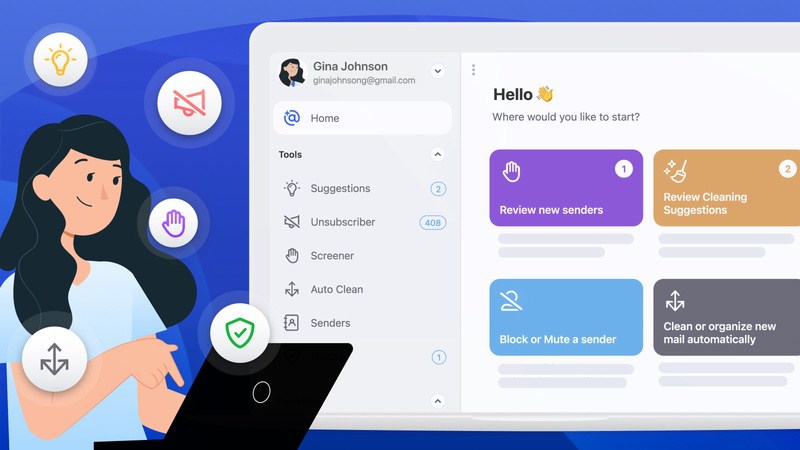
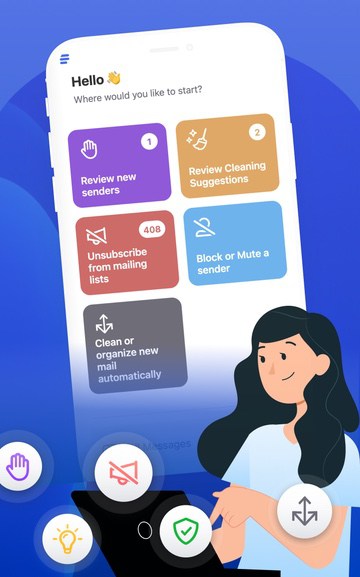
Some of the best Clean Email’s features are:
Cleaning Suggestions
This feature suggests cleaning solutions based on a couple of factors: your most frequently used cleaning actions and other users' most frequently used actions on their emails.
It helps clean specific groups of emails, making cleaning so much quicker. Simply choose an action, for example, trash, and move all grouped emails from the Cleaning Suggestions into the trash!
Unsubscriber
The Unsubscriber feature removes you from all unwanted newsletters with a few clicks. Just choose all subscriptions you no longer need in one place and the app will send unsubscribe requests on your behalf.

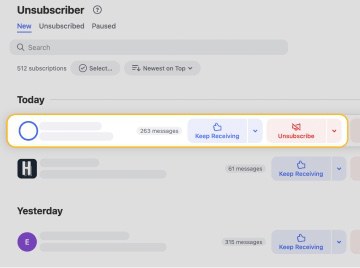
There are lots of things you can do with Unsubscriber. You can preview messages within the Unsubscriber page, this helps you choose whether to keep or remove the subscription.
All senders with the same unsubscribe link are grouped, so you only need to click one and they're all sorted!
You can choose to keep, unsubscribe, or read emails later.
Auto Clean
Auto Clean allows you to create specific automated rules to tidy your inbox as soon as a new message lands!
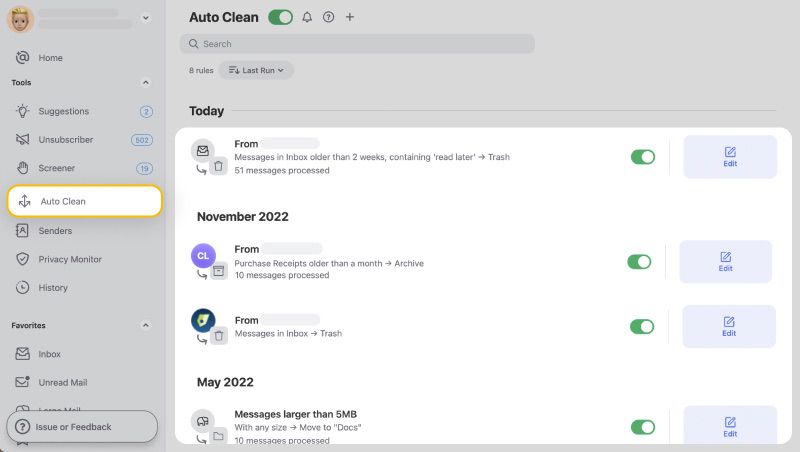

This cuts out the need for daily manual mailbox management. To create an Auto Clean rule, select a message and click the Create Rule icon within the action bar. Here you will be prompted to fill in any criteria you need. You can always go back and change your rules later.
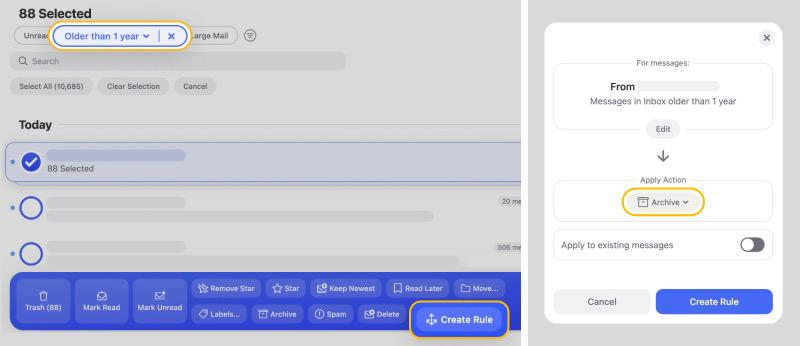
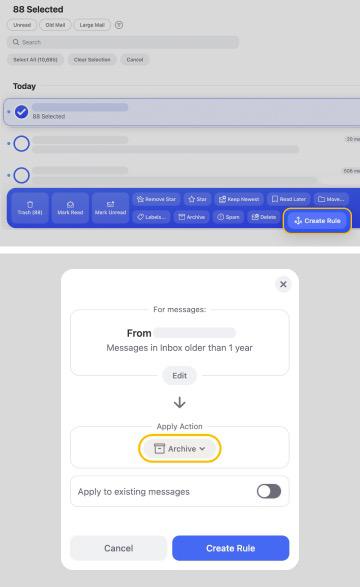
Within the Sender Settings feature, you can choose to block, move to trash, mute, and more!
Clean Email cares about your privacy and security. We do not keep, sell, or share any of your personal data.
Wondering to get more tips and tricks on how to write emails professionally? Check out our guide on how to end an email.
Best Email Greetings - FAQs
How do you start an email professionally?
Start a message professionally by using a formal greeting. Keep the sentence short and sweet. Good no fail email greetings to use are: ‘Hello/Hi [name]’ and ‘Dear [name/company name]’
What is a good starting sentence for an email?
You want to start your message with an enticing opening sentence. You can use an informal or formal opening line depending on the recipient, such as “I hope this email finds you well.” or “I’m emailing you to inform you of…”
How do you start a formal email sample?
Start a formal message with “Hello [name or company name]”, then move on to a suitable opening line. For example, “Just emailing you to inform you…”
Is it OK to use greetings in email?
You should always use greetings in emails, especially if they are the first of the thread and you’re emailing someone new.
What is a professional email salutation?
A professional email salutation is the initial greeting you give when sending a message. You want to make sure your message sounds formal to a new reader, otherwise, they may not bother replying.


